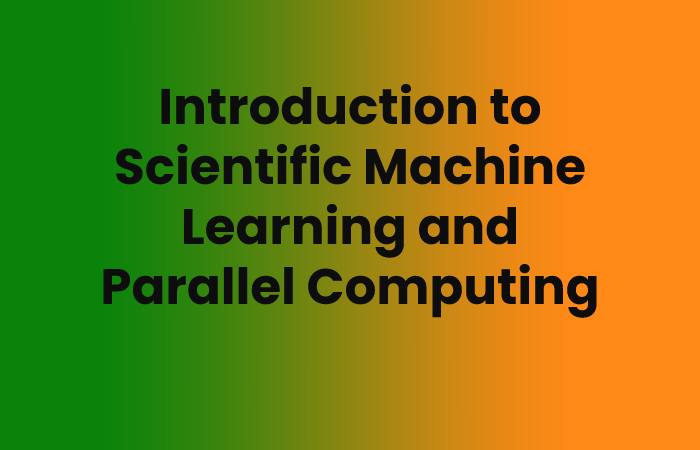Computing and Scientific Machine Learning
Its repository remains designed to be a dynamic resource that remains constantly updated with the most recent information on methods used in the field of scientific machine learning and cutting-edge high-performance computing methodologies.
Table of Contents
Introduction to Scientific Machine Learning and Parallel Computing

Scientific computing and machine learning are the two primary subfields of technical computing. The last ten years have seen a lot of excitement around machine learning, with new data-driven analytics powered by methods like convolutional neural networks and TSne nonlinear dimensional reductions.
The two fields have, however, recently begun to merge. Scientific machine learning has demonstrated successes like the speedup of partial differential equation simulations using neural networks. To improve the tools in this field, new techniques like probabilistic and differentiable programming have begun to remain created.
The approaches in this subject remain sufficiently sophisticated since they merge two sizable fields of computational and numerical practice. How is a neural network-defined ODE back propagated? How can you use a scientific simulator to accomplish unsupervised learning?
Techniques in this Course
We will delve into the techniques in this course to better understand what they accomplish, why they remain created, and how to combine numerical approaches across areas to highlight their benefits while minimising their drawbacks.
This course will provide an overview of numerical approaches, demonstrating how several fields use the same methodology under various names while generating effective routines that can remain used in both data-driven and mechanistic modelling.
If these approaches remain crudely designed, they will rapidly encounter a scalability problem. Everything will be centred on performance engineering to address this issue. We’ll begin by learning to optimise serial code while concentrating on naturally serial algorithms.
Then we will demonstrate how multithreading and distributed computing methods like MPI may parallelize logic-heavy programmes while GPU computing can parallelize straight mathematical descriptions.
Traning
The training will culminate in a special project that combines these methods. The students will remain introduced to “low-hanging fruit” as a new field and will remain pointed in the direction of an area where they may have an immediate influence.
For their final project, students will collaborate to find a new solution in the area of scientific machine learning. They will also receive assistance in producing an analysis of their work that is suitable for publishing.
What is Parallel Computing?
When a bigger issue remains divided into smaller, independent, frequently comparable components that may remain worked on concurrently by several processors connected by shared memory, the process is known as parallel computing.
The completed results remain integrated as a component of a larger method. Increasing the amount of computation power available for quicker application processing and issue resolution is the main objective of parallel computing.
The majority of parallel computing infrastructure remains kept in a single data center. Where numerous processors remain located in a server rack. The application server distributes compute requests in tiny pieces, which stood subsequently processed concurrently on each server.
What is Scientific Machine Learning?
In the field of data science, scientific machine learning (SciML) is a new subject. Through creative methodological approaches, SciML aims to overcome domain-specific data issues and extract insights from scientific data sets.
SciML is the next wave of data-driven scientific discovery in the physical and engineering sciences. It draws on tools from both machine learning and scientific computing to produce new techniques for scalable, domain-aware, resilient, reliable, and interpretable learning and data analysis.
Conclusion
SciML is interdisciplinary and draws on knowledge from applied and computational mathematics, computer science, and the physical sciences. It is similar to scientific computing.

